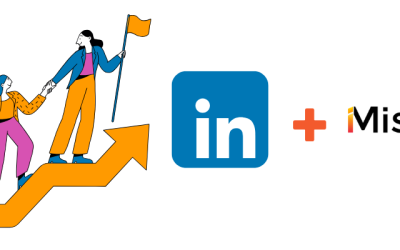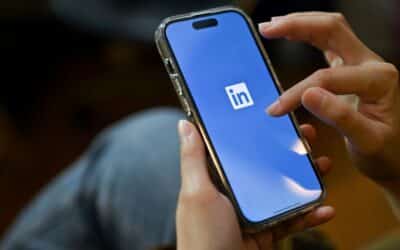Nonprofits know there is no such thing as one-size-fits-all fundraising. If you’re trying to figure out what motivates donors to give, you aren’t alone. Donor pools vary by age, education, lifestyle, interest, occupation, and more. In other words, donors come in all shapes and sizes. By breaking down donors into the different age generation groups, we can start to understand the psychographics that help explain why donors give. And, once we understand the ‘why’, we can discover what will motivate them to give to your organization.
In this article we are painting with a broad brush, describing each generation in terms of the behaviors exhibited by the majority of the group. Each generation can be described as distinct and separate, but in reality, we are all the same. At iMission we believe there is much more that unites us than divides us. Here’s a brief run-down on the different generations we will be covering:
Current Generational Groups:
GenZ: true digital natives, this group is savvier than you think – and motivated to help. What’s the key? Action.
Millennials: everyone’s favorite scapegoat, this generation has earned a reputation for NOT giving – but is it accurate? Social campaigns are critical with this group.
Gen X: The Sandwich generation is still raising kids and now assisting aging parents. Do they have enough time and energy to help? Yes, they do, but you’d better be clear about where the money goes.
Baby Boomers: Peace and love, and a reputation for monthly giving – how does it all connect? It’s all about the cause.
The Silent Generation: known for holding their opinions close to the vest, what’s the secret to unlocking the potential behind this enormous donor pool? Altruism.

Every Donor Is An Individual.
Understanding the major forces at play within each generation can inform your fundraising campaigns by allowing you to focus on key elements of your strategy. Choosing the best-suited tools in your marketing toolbox for each age cohort can lead you to a very successful giving campaign.
According to the Blackbaud Institute’s 2021 Charitable Giving Report, overall giving in the United States grew 9% from 2020 to 2021. These numbers were based on a survey of over 8,200 nonprofits, showing an uptick in overall dollars trending back to 2014. While the dollars may be growing, many nonprofits are aware that the total number of individual donors is declining.
In the era of COVID19, we know that many fundraising events originally scheduled as in-person programs were hastily converted to online only. What does this mean for nonprofit donor marketing in 2021? Can a better understanding of each generation of Americans help to point the way to more effective fundraising?
Demographic Information
Demographics tell you about your donor based on different interests they have, or their age, but it is important to think about why they give.
Each generation is diverse and no two donors are exactly the same. However, each age group has shared world events which help shape their point of view and help make them into the donor – or potential donor – you see today. Taking a look at each generation’s timeline, characteristics, and coming of age environment can help you start thinking critically about why some people are motivated to donate, while others are not. To assist in your marketing plan, here is a breakdown of the current generational profiles.
Generation Z – Current Ages Between 5 – 25
Born roughly between 1995 through 2015, Gen Z is the first group of true digital natives. Unlike Millennials, they do not remember a time before smartphones or the internet. Startlingly for some of us, this group grew up post 9/11. Many have memories of the Great Recession in 2008 impacting their families. Just this year, those in the Class of 2020 have taken part in virtual graduations. Significantly, nearly every member of this group had to pivot to a distance learning experience during the COVID19 pandemic. As a result of their shared experiences, this generation is considered to be very pragmatic and self-sufficient.
Digitally astute, many Gen Z members are actively learning lessons from their forebears. Many Gen Zers witnessed Millennials suffer the consequences of indiscreet sharing on social media and losing social clout, or even jobs, as a result of oversharing. As a result, Gen Z has a more controlled online presence than some older groups. Apps such as SnapChat, Whisper, and Discourse are preferred by Gen Z because they leave less of a digital trace to follow.
As true digital savants, Gen Z members are mindful of the persona they build with their online accounts. Today’s young people recognize that personal branding can go a long way in terms of career building and their future success. On the whole, they love Amazon and 1 day delivery, but they do NOT love Facebook.
What Does This Mean For Fundraising?
In 2021, Gen Z comprises the largest cohort in terms of overall size. At 86 million strong, they top the charts at just about 26% of the total population, and are the most ethnically and racially diverse generation alive today. Even though this group is just entering the professional workforce in large numbers, they are already reputed to have over $143 billion in buying/spending power. In the coming years, this number will only get larger as they reach their professional peak. And what is the magic that motivates them? Action.
As a group, Gen Z is ready to help and they are motivated to volunteer – but only on their own terms. Instead of focusing on what steps you want them to take, turn this thought process upside down. Make your ask all about how your organization impacts them. Give them choices: ask them to share your news, host an auction, create an event or a campaign. Think Ice-bucket challenge. They will make their choice and run with it. With this group, it’s less about the money and more about the experience and how they can help.
Make The Most Of What You Know
Use this information to inform your campaign building, and be sure to find these donors where they are – online. Don’t expect them to find you. Instead, build a presence where your prospective donor is known to be. Think as they do and find them on an app, on a specific social channel, or on a specific website.
Of note: many Gen Zers are under 18 and are still being supported by their parents. In a 2018 survey, between 26 and 50% of parents of Gen Zers said their children influence their spending decisions – including philanthropic giving. Because of their youth, their average annual donation per donor is just $341. We know this amount is certain to grow as they mature and discover more causes with which they resonate.
Let’s not forget to mention Social Justice. Gen Z has been visibly and vocally active in their support of the Black Lives Matter movement. They are rapidly growing into a powerful force for change. This generation will not wait for social justice to happen, they are making it happen. If your cause resonates with this group, they will move heaven and earth to support you.
Millennials – Current Ages Between 26 – 40
Millennials, also known as Generation Y, were born between 1980 and 1994. The average Millennial has been majorly impacted by student loan debt, and in large part these people were just entering the workforce as the Great Recession began in 2008. With the COVID19 outbreak, this generation has been hit hard by layoffs and furloughs. Highly educated and culturally diverse, this group currently makes up half the US workforce. Challengingly, for the past 5 years, this cohort has seen higher unemployment rates than older groups. Since the pandemic, Millennial underemployment rates are even higher, with over 18 percent considered underemployed.
What this has meant for Millennials is that many of them have delayed getting married, having children, and even buying their own homes. They are, on the whole, financially conservative. Whether it’s a result of social media exposure or their experiences with economic upheaval, Millennials generally prefer to spend on experiences, similar to their younger Gen Z brethren. However, nonprofits have been able to reach this demographic by focusing on peer to peer networking. With Millennials, it’s all about being social.
What Motivates Millennials To Donate?
The 82.2 million Millennials are social givers. Interestingly, they are much more likely to donate or volunteer if they know their friends or coworkers are also involved. Walks, fun runs, auctions, online campaigns- all of these can be very effective with Millennials. Consider adding things like gamification, groups, and networking challenges to your fundraising strategies. Connecting to a social cause that is receptive to feedback and collaboration also motivates Millennials to engage.
Clarity is also important, so be sure to share your organization’s raison d’etre. If this group is your focus, tell them how their assistance will further your cause. With an average annual donation of $591 per donor, Millennials already give upwards of $24 billion annually, and will remain a powerhouse for the next several decades.
Millennials are also out to change the world – but in their own way. A recent Case Foundation study found that Millennials “identify more directly with issues than the entrenched institutions. They believe a bunch of small and even virtual acts can add up to larger social shifts. And chief among those actions isn’t publicly volunteering or donating—not until the specific cause group earns their affiliation and respect.” Heed these words and make sure your outreach matches your impact.
Generation X – Current Ages Between 41 – 55
Born between 1965 and 1979, Generation X is also known as the “Latchkey Generation” due to the rising trend in divorce rates, as well as the growth in the number of women who entered the workforce during Gen X’s formative years. This cohort was the first group to come of age with MTV, earning them the nickname the “MTV Generation.”
Sandwiched between 68 million Baby Boomers and 82 million Millennials, the 65 million members of Gen X are sometimes referred to as “The Forgotten Generation.” This small, but financially powerful group contains a large proportion of highly educated entrepreneurs. 35 percent have college degrees, and a whopping 55 percent of startup founders are members of Gen X. According to Stephanie Neal, a research scientist in Development Directions International’s Center for Analytics and Behavioral Research, Gen X leaders now hold more than half (51%) of leadership roles globally, and have more spending power than any other generation.
How Do You Get Gen Xers To Donate?
As donors, Gen X are a unique bunch. They have strong ties to friends and family and they are also extremely digitally savvy. According to Millward Brown Digital, 60 percent of Gen Xers use a smartphone on a daily basis, while 67 percent use a laptop or PC daily. This statistic surpasses the 58 percent of Millennials who use laptops or PCs daily. On the whole, Gen Xers are very brand loyal, especially when compared to Millennials, Gen Z, and even Baby Boomers. The majority of Gen X willing pays more for brands they know and trust. They are also willing to donate – with one major proviso: transparency. Gen Xers have a healthy dose of skepticism and need to be absolutely certain their donation is being used efficiently.
Gen X donors need to know where their money is going. If your fundraising campaign does not spell out clearly how the funds are used, you won’t move the needle with this group. Telling an impactful story about how their support helps make the world a better place is the way to go. Graphs, charts, photos and other kinds of proof are what motivates this cohort to reach for their wallets.
Of consideration- this group is very generous to campaigns that involve their workplaces. Things like corporately sponsored walks or runs will win over Gen X donations as they are more inclined to donate when they trust the sponsor’s philanthropy. With an average annual donation of $921, totalling nearly $33 billion, Gen Xers are prepared to open their wallets, so keep this in mind when developing your campaign planning.
Baby Boomers – Current Ages Between 56 – 76
This generation was born between 1944 and 1964. The name Baby Boomer comes from the noticeable population spike in the United States after the conclusion of World War II. Baby Boomers grew up in post-war prosperity, then showed their colors in leading the nonconformist movements of the 1960s and 1970s. Interestingly, Boomers tend to be very brand-loyal, and once their trust in your organization is earned, you would do well to stay in touch with them.
At 68.7 million in size, Baby Boomers are the second largest age group, but they have the most disposable income out of any of the generational groups. Unlike Gen X, who are still raising families and in the middle of their peak earning years, Baby Boomers have had years of high wages and savings. At this time in their lives, Boomers are moving into retirement with fewer familial financial obligations than Gen X. Accordingly, this group is also the largest source of donations for nonprofits. Nearly half (49%) are enrolled in some form of monthly giving. On average, Boomers donate $1,061 annually, benefiting nonprofits to the tune of over $54.6 billion.
What’s The Bottom Line For Baby Boomers?
Baby Boomers should be at the top of mind for philanthropy efforts, as they have the most discretionary income. What motivates Boomers to give? Your cause. Boomers are known to respond to nearly every form of fundraising campaign, whether via direct mail, phone, email, or live events. For this group, it’s all about your message and your cause. Be sure to stay in touch with Boomers, sending regular reports and updates on your nonprofit’s progress. Encourage them to donate on a recurring schedule. No matter which strategy you use for outreach, staying in touch and underscoring your cause will help solidify your relationship with this generation.
If your organization is involved in any type of Social Justice cause, now is your moment. Boomers grew up during the peace & love timeframe, and many marched and picketed in civil rights and equal rights protests and rallies across the decades. This cohort is very politically minded and reaching out to get them involved with your organization can give you a huge boost in volunteers as well as funding.
Silent Generation- Current Ages Between 77 – 97
Born between 1923 and 1943, this age group was nicknamed the Silent Generation because of their focus on careers rather than activism. At 23 million strong in 2020, the Silent Generation came of age during the restrictive McCarthy Era. As a result, there are proportionally fewer members of this generation who are outspoken in the world of politics. However, this cohort also witnessed the birth of rock & roll and had front row seats to the Civil Rights movement. Luckily for them, this generation enjoyed the period of strong economic expansion following World War II. The majority of this generation began retiring just as the economy started slowing down in the mid 2000’s.
An enormous 88% of this cohort gives regularly to philanthropy, and they represent 26% of total US giving. Also known as Traditionalists, this group is known for being very hardworking, loyal, and consistent. Traditionalists are financially conservative, often having a “pay cash or save” mentality, allowing them to become a generally wealthy age group. Now in their later years, this group donates the highest average amount of $1,235 yearly. What motivates them to donate? Making a societal impact and altruism.
Silent Generation Fundraising
This generation’s donations tend toward veteran or military organizations, political advocacy and elections, the arts, and emergency relief. Many in this generation may not have been vociferously vocal politically, but they do support political and social justice causes – generously. If your nonprofit fits into one of these areas, including the Silent Generation in your planning is a must. Traditionally, this group responds best to direct mail and telephone efforts, but a surprising 35% said they recently gave via an online platform. Pull out all your best strategies for reaching this group – they’ve got money saved and are at a point in life where they are willing to support a cause greater than themselves.
No matter which group you want to target for your fundraising efforts, understanding what motivates an individual – or a generation – to open their wallets and support your organization is critical to a successful campaign. If your organization is looking to put together a fundraising campaign, iMission can help!
Whether it’s strategy, planning, training, execution, or reporting, iMission’s expertise in making technology work for nonprofits can support your fundraising.



